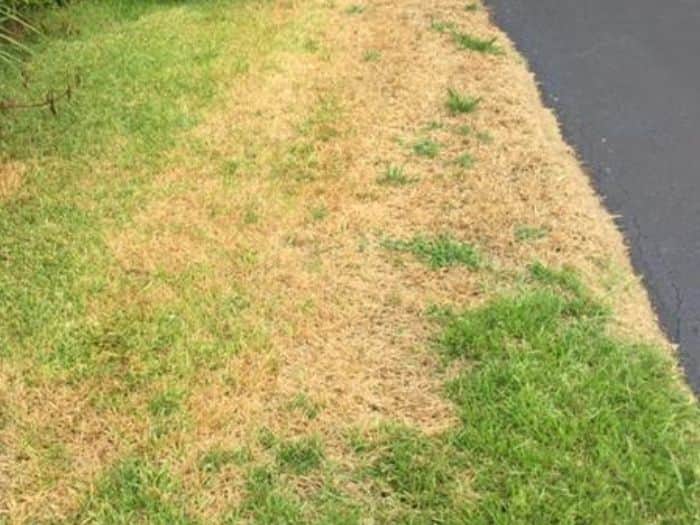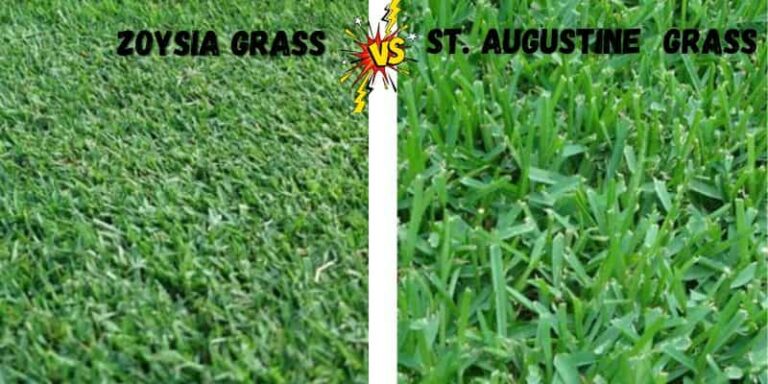St. Augustine Grass Turning Yellow: Causes + Fixes to Make it Green
The St Augustine grass in your lawn brings pride and joy to your backyard. You spend time mowing, watering, fertilizing so that you can enjoy the lush green grass all year long. Then one day, you notice a color change in your grass. What happened?
St. Augustine grass can turn yellow if it is not getting enough water and fertilizer, or due to a pest infestation. To fix the yellowing, provide the lawn with 1 inch of water each week and apply slow-release nitrogen fertilizer to feed the grass throughout the season and make it greener.
Why is my St Augustine grass turning yellow?
Here are some of the reasons why your St Augustine grass could be turning yellow:
Excess moisture from overwatering
Too much water could make your grass turn yellow. Some symptoms of waterlogged lawns are yellowing, loss of color, and thinning. When too much water enters the soil, it can cause root rot, resulting in lost vigor, defoliation, and sometimes death for the St. Augustine grass.
When you notice that even though you have just watered, the grass is still wet or has a puddle on top after watering, then your lawn soil is water-logged. Water-logging occurs because there was insufficient soil drainage provided for the St. Augustine grass.
St Augustine grass becomes very susceptible to diseases when overwatered during periods of hot weather.
Another thing to consider before overwatering your lawn is how often you should be doing it. Generally speaking, healthy St. Augustine grass needs one inch of water per week, but the soil will need more if roots are damaged and compacted.
Extreme temperatures
The optimal temperature suitable for St Augustine grass is between 60 and 80 degrees Fahrenheit. Too much exposure to heat causes the plant’s blades to lose their chlorophyll, which gives them their green color. Blades without chlorophyll turn to yellow.
A too-cold environment can damage underground rhizomes due to”freeze injury.” The extreme cold temperatures also prevent healthy growth of St Augustine grass resulting in browning on parts where new shoots have emerged.
Overfertilization and salt burn
Fertilizers are excellent for lawns. But even the best fertilizer is unhealthy when applied too frequently, or too much at once. If you have St Augustine grass in your yard or garden, avoid using excessive amounts of fertilizer as it may cause the plant to be yellow and die prematurely.
St. Augustine’s Grass thrives in acidic soil. So, yellowing occurs if you live near a lake where there’s alkaline water seeping into heavy clay soils that drain poorly.
It would be best to fertilize less during periods of winter dormancy using one pound of nitrogen fertilizer for every 1,000 square feet of sod.
Inadequate sunlight and water
St. Augustine grass is a warm-season grass that requires six hours or more of sunlight daily. The grass turns yellow when it is not getting enough sunlight. Lack of sunlight causes the loss of chlorophyll in the grass leaves. Lack of chlorophyll makes them appear whitish-yellow.
This yellowing occurs when the plant tissue is damaged from cold weather or lacks nutrients due to insufficient sun exposure.
Also, if St Augustine grass does not receive enough water for an extended period, it turns yellow. Lack of water causes cells in its leaves to dehydrate. At the same time preventing them from taking up average amounts of nutrients.
Inadequate water can also lead to discoloration of St. Augustine lawns from dark green to pale yellowish-green. The grass can also turn white in cases where there isn’t enough water and sunlight as a result of reduced photosynthetic pigments such as chlorophylls and carotenoids.
Insect infestation
As insects eat the grass, they cause yellowing of the blades. Yellowing occurs because when an insect eats a blade of green grass, it leaves behind its brown faeces.
The insect faeces contain nitrogen from digested plant material and phosphorus from the broken-down bone meal in their bodies. This causes a depletion of these nutrients, resulting in yellowing whether there is drought stress present.
To determine if bugs are causing your lawn’s problems, look for more than just one symptom, such as discolored patches with no evidence that herbicides have been applied recently.
Other signs of insect infestation can be wilting of the St. Augustine grass during mid-day hours even when the soil is moist.
Irregular mowing height and frequency
St. Augustine grass is an easy-care lawn that requires less maintenance than other types of turf. Mowing the grass properly and watering it regularly can keep your yard looking lush and green all year long.
However, when you mow St. Augustine grass too low, yellow blades begin to appear in clumps throughout the lawn. This problem doesn’t have to ruin your whole yard; there are several things you can do to get rid of those telltale signs of undercutting without harming your plants or soil.
How to fix yellow St. Augustine grass
A lawn is a vital part of any garden, but it does require some work. If you want your green lawn to stay green and healthy, many things need to be done right for this to happen.
If you have been struggling with having lush-looking lawns, try these tips on how to bring back the gorgeous greenery into your yard.
1. Feed your lawn with the right amount of fertilizer
Using too much fertilizer will burn the roots and kill them, resulting in discolored patches on the St. Augustine grass. On the other hand, if you did not fertilize enough, then it can lead to thinning out, which results in weaker plants with poor water absorption abilities.
Thinning out causes a drought-like situation where there are no nutrients available for St. Augustine grass to absorb. Eventually, the grass in your lawn turns yellow and may even die.
The best fertilizer option is calcium or phosphorus-rich fertilizers that help balance out nutrient ratios. Additionally, add lime to your soil to neutralize excess fertilizer that you might have used before.
2. Install an irrigation system
Install an irrigation system that waters the lawn evenly when there are no rains. Watering the grass lawn evenly and regularly will help bring back color.
If you are watering St. Augustine grass, adjust the sprinkler so that all parts of the yard get watered at roughly the same rate.
You can also use an irrigation controller or timer to water your lawn daily for about 30 minutes each time. Be sure not to overwater either because this could cause damage.
3. Mow your lawn regularly and frequently
Mowing your lawn regularly helps get rid of the dead grass to encourage the growth of green grass.
You must mow St Augustine grass frequently at least every five days when its growing season begins in March or April until September or October.
If not, you will see signs that your lawn is becoming diseased such as yellowing turfgrass plants and patches on your yard with thinned-out areas.
4. Use a weed killer that is safe for St Augustine grass
Weeds and fungal diseases thrive when it gets hot and humid during the early morning hours. They can cause dead spots on your St Augustine grass within a couple of weeks, depending on the weather.
I recommend using a weed and feed treatment on your lawn to ensure healthy, green grass. Weed killers like the Syngenta Tenacity Turf Herbicide will help with these fungal diseases and prevent further infestations by killing the weeds that cause them.
Will yellow grass turn green?
St. Augustine grass has a bunch of leaf blades with tough and fibrous tissues. These tissues protect them from harsh weather conditions, insects, and animals. It also makes the leaves less susceptible to disease.
If you’re noticing that your St Augustine grass is turning yellow, don’t worry. There are several reasons why that could be happening. However, the yellow St Augustine grass will turn green if you follow the above-mentioned steps.
Our team can help you diagnose what is making your St Augustine grass turn yellow so we can come up with a plan to fix it right away. Contact us today if you need professional services to take care of your grass.



